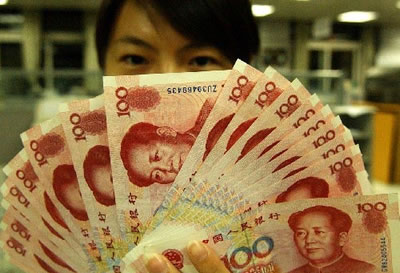 |
Whilst China’s massive development loans to Sri Lanka are often portrayed as rescuing the Rajapakse administration from international economic pressure over human rights abuses, the details tell a different story.
While China’s loans are an immediate de-facto handout for Chinese companies (which Sri Lanka is obliged through conditionalities to hire and purchase from), future Colombo governments will be left with the debts - at interest rates higher than other developmental lenders ask for.
In short, Colombo is borrowing from China but pumping the money into the Chinese – not Sri Lankan – economy.
Already the biggest lender to Sri Lanka, China has now pledged more than $3bn (£1.9bn) for infrastructure development, maintenance and other projects, the BBC Sinhala service reports.
Key conditionalities
Much of the debt is offered by China’s fully government-owned Export-Import bank.
And here’s the catch:
“Chinese loans by Exim bank are mainly offered to buy Chinese products and services," says Asantha Sirimanne of Lanka Business Online.
Secondly, the contracting firms, the subcontractors and even labourers involved in Sri Lanka's major projects are Chinese nationals, he says. (There have even been reports that the Chinese firms have brought in convicts from China to carry out the work.)
"And all raw material is imported from China," Mr. Sirimanne added, in comments to the BBC Sinhala service.
So, while Chinese companies’ revenue and profits are boosted, China swaps some of its cashpile for a future income stream – which Sri Lanka will have to somehow generate revenue (or borrow anew) to meet.
No concessions
And Sri Lanka gets no favors on interest rates either.
“The rates offered by China are higher than those offered by the World Bank, and direct government loans from Japan," Mr. Sirimanne says.
"But it is definitely lower than the commercial bank rates."
This is normal for developmental loans. No government in its right mind would borrow for massive infrastructure projects on commercial bank rates – any more than individuals would look to buy a house on a credit card.
Any country embarking on massive infrastructure relies on soft (long duration, low interest) loans from the World Bank, Asian Development Bank, and similar multilateral lenders – which exist to provide such assistance – or from bilateral state donors.
Indeed, much developmental aid, especially from WB and ABD, come as grants – which governments don’t have to pay back.
These and soft loans have secondary advantages by enabling governments to pump money into their local economy to boost domestic growth.
However the Chinese loans to Sri Lanka are instead being recyled into the Chinese economy.
Until China began lending (after Mahinda Rajapakse became president), 75% of Sri Lanka’s ‘aid’ was from Japan, the World Bank and Asian Development Bank.
Unforgiving
And China is no friend to Sri Lanka when it comes to money owed. Here’s what the Sunday Times’ editorial says this week:
“Negotiations continue with China for several unpaid bills for arms purchased during the protracted ... insurgency. While China is offering to bail out collapsing European economies, it won't simply write off these loans from Sri Lanka as a bad debt.”
So what happens when Sri Lanka’s Hambatota port – built by Chinese contractors, using Chinese labour and Chinese materials and financed by Chinese loans – is complete? Colombo will be left with a port and a massive loan to repay.
In other words, any income that the port may generate goes not to Sri Lanka, but to pay off the Chinese and other debt.
And as the Sunday Times also pointed out, even now, “the country is also taking soft loans from the IMF and commercial loans from foreign banks at high interest rates.”
The gamble
And while Sri Lanka is banking on the Hambantota port becoming a transshipment hub to generate income, this is by no means a given.
Sri Lanka’s existing container port, in Colombo, is already seen as vulnerable to growing competition from fast-improving Indian ports such as Cochin, and the Salalah port in Oman.
India is meanwhile planning to develop a number of ports – for which Chinese-owned companies are reportedly also bidding.
Notably, while the Rajapakse administration envisions 10,000 ships coming into the Hambantota port a year – in addition to arrivals in Colombo, that is, - industry analysis by LBO says all of Sri Lanka’s existing ports combined have never welcomed more than 5,000 ships a year.
And if the Hambatota port fails to generate sufficient revenue?
Well, Sri Lanka’s government – headed by President Rajapakse or anyone else - will still have to find other ways to repay the Chinese loans.
And this may also involve cannibalizing Colombo’s port, driving traffic from there to Hambantota instead.
So, who really benefits from Chinese loans to Sri Lanka?
We need your support
Sri Lanka is one of the most dangerous places in the world to be a journalist. Tamil journalists are particularly at threat, with at least 41 media workers known to have been killed by the Sri Lankan state or its paramilitaries during and after the armed conflict.
Despite the risks, our team on the ground remain committed to providing detailed and accurate reporting of developments in the Tamil homeland, across the island and around the world, as well as providing expert analysis and insight from the Tamil point of view
We need your support in keeping our journalism going. Support our work today.
For more ways to donate visit https://donate.tamilguardian.com.

